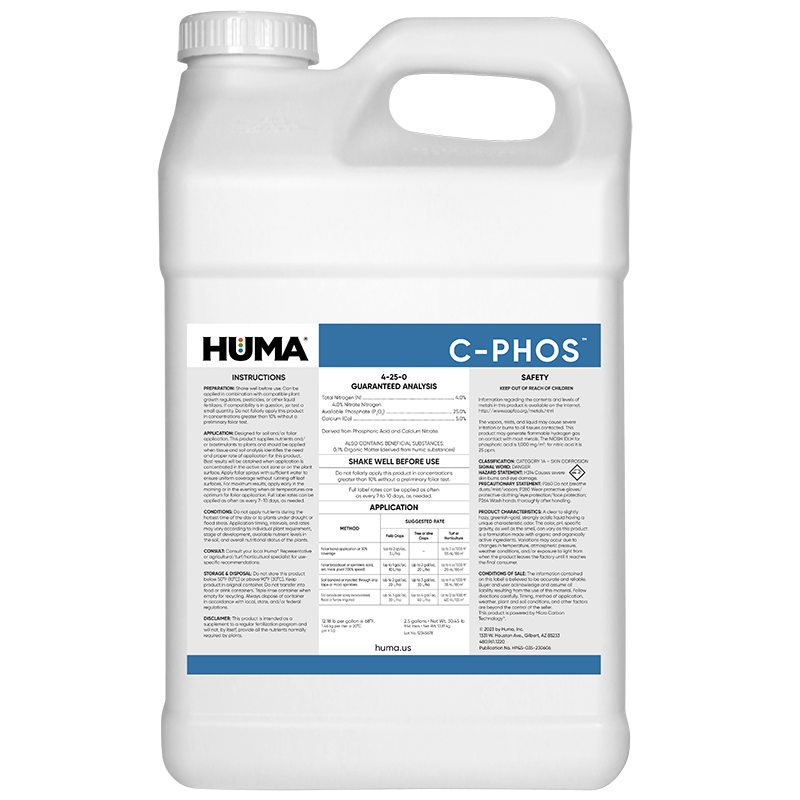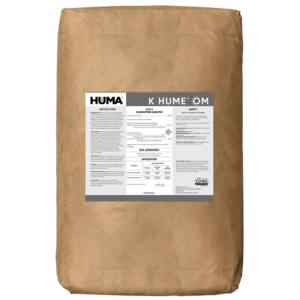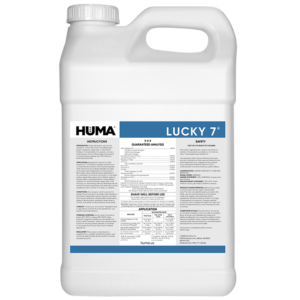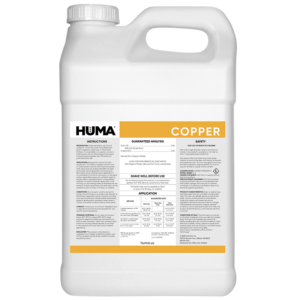C-PHOS
Benefits of Use:
- Resists “tie-up” with calcium or aluminum to remain water soluble and available to plant roots
- Moves with irrigation water to aid in proper placement
- Can be tank-mixed to improve availability of other nutrient solutions
- Is non-salt-forming
- Aids in phosphorus uptake in cold or waterlogged soils
- Is useful in the cleaning and maintenance of drip irrigation systems
- Aids phosphorus uptake in high pH or calcareous soils
Deficiency Symptoms—When to Apply:
- Slow growth; stunted plants
- Purplish coloration on foliage of some plants (older leaves first)
- Dark green coloration with tips of leaves dying
- Poor grain, fruit, or seed development
- Leaves and terminal buds distorted
- LETTUCE: tip burn; TOMATO/PEPPER: blossom-end rot; CUCUMBER: hollow heart; BROCCOLI: black heart
FAQs
Related Products
Related Case Studies

Super Phos® Multi-State Midwest Trial
Background Application of phosphorus (P) fertilizers—such as triple super phosphate (TSP), monoammonium phosphate (MAP), diammonium phosphate (DAP), liquid ammonium polyphosphate (APP), and other forms—can be inefficient and, at times, not environmentally friendly. A technology that can mitigate these P fertilizer challenges without compromising yield and return on investment is highly desirable. Huma® Super Phos® is
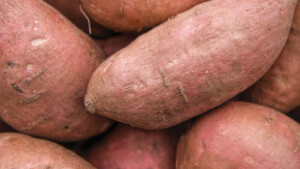
Huma® Program Increases Sweet Potato Yields 39%, With a 10:1 ROI
Objective This field trial was conducted in order to compare sweet potato crop yields and return on investment (ROI) obtained when a Huma® soil product (Zap®, for feeding soil biology and improving soil fertility) and 2 applications of 3 Huma® foliar nutrients (Jackpot®, Calcium, and Super Potassium®) were applied in various combinations. Materials & Methods

Huma® OM Liquid HA 16 With Micro Carbon Technology® Improves Spring Wheat Yield With 60% Increased ROI
Background Humic substances have been shown to improve crop yield. Solid and liquid forms of humic substances with high levels of organic acids can be produced by incorporating Micro Carbon Technology®. Some are suitable for conventional and others for organic farming. Huma® OM Liquid HA 16, OMRI-Listed for organic farming, is a liquid form of
Related Blog Posts

Beef Is More Than a Business, It’s a Passion.
Beef Is More Than a Business, It’s a Passion. Few professions capture our imagination like ranching. There’s an undeniable romanticism attached to cowboy culture. Taylor Sheridan has made a career depicting it. And let’s be real, they don’t make movies or write songs about pork and poultry producers. Western lifestyle is at a fever pitch. Brands like Ariat and Wrangler are thriving. And so is the cattle industry. Beef prices are enjoying record highs. And when it comes to producing beef, nobody does it better than the American cowboy. US cattlemen produce over 21% of the world’s beef supply – 28 billion pounds annually – ranking #1 in the world. Yet they do it with just 6% of the world’s cattle herd.

Moving Closer to Farmers
Just as all politics are local, all farming is local. Terrain, soils, weather patterns, market access and cultural production practices vary dramatically across the Fruited Plain, as do the issues and concerns shaping ag policy. So it only makes sense for the entity that combines politics and farming to go local. Because in an urbanized city located on the banks of the Potomac, run by elephants and donkeys, you don’t see many cows, pigs or chickens, much less corn, wheat or almonds.


